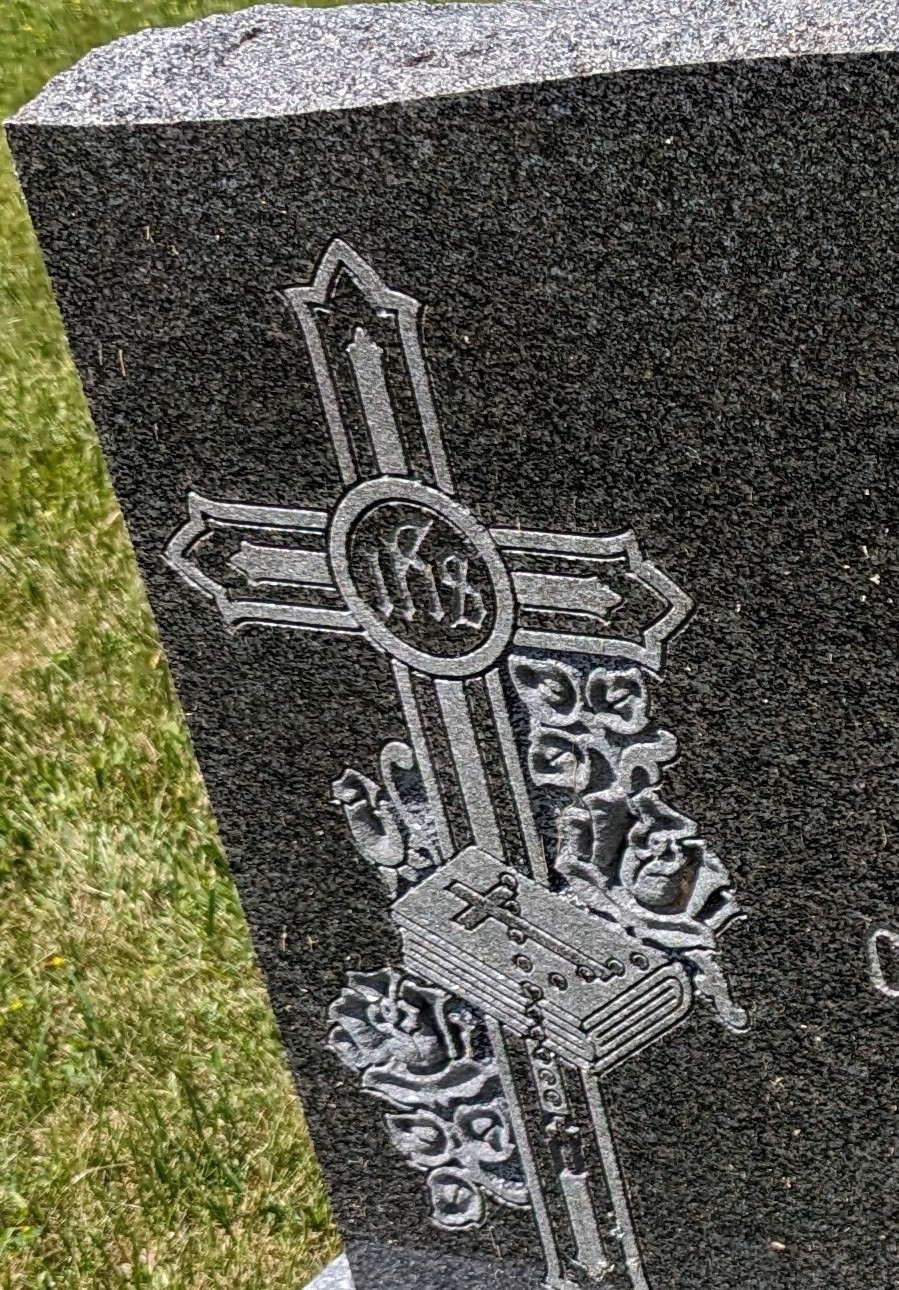G is for Grave Offering
Many things can be left at graves as offerings or 'gifts' to those who have passed. Offerings can range from coins, toys, stuffed animals, pictures, candles, or even stones, as shown above. The meanings of these offerings can usually be understood by looking at the items themselves. For example, a teddy bear or toy left at a headstone may be for a child, or flowers may be for someone who loved flowers. The meaning of stones might be a bit more of a mystery. Leaving stones at a grave is generally a Jewish practice, representating that a loved one has visited the grave.
H is for Hands
Hands can be seen on headstones in many different styles. The hands above are shown clasped together to represent the last Farwell between the living and the deceased. It can also be on the headstone of a husband and wife to represent their union. A hand pointing up to the sky represents the deceased moving on to heaven in the afterlife and that their loved ones should look up to the sky to see them. A hand pointing down does not mean that the deceased has gone down to the opposite of heaven, but rather is symbolic of God's hand coming down to bring the soul up to heaven.
I is for I.H.S
One misconception about the meaning of I.H.S. on headstones is that it stands for ' I Have Suffered', referencing the crucifixion of Jesus Christ. In fact, it stands for the first three letters of 'Jesus' as it was written in Greek. The translation looks like this: Jesus - ΙΗΣΟΥΣ. Therefore the first three letters, ΙΗΣ, could be shown with English letters to look like IHS. This abbreviation or monogram can typically be found on Catholic headstones, especially Irish Catholics.


